Traditional Asian Costumes: Elegance, History, and Cultural Heritage
Discover traditional Asian costumes, from the Japanese kimono to the Vietnamese áo dài — symbols of elegance, history, and cultural heritage.
BLOG GÉNÉRAL
8/29/20257 min read


The Most Beautiful Traditional Asian Costumes – Part 1
Asia is an immense continent with an incredible cultural richness. Every country has its own traditions, and among them, clothing holds a central place. Traditional costumes are not just beautiful outfits: they tell the story, identity, and soul of a people.
To honor this diversity, we will explore the 12 most iconic traditional costumes of Asia through a series of three articles.
👉 In each part, we will discover 4 emblematic outfits, their origins, their symbolism, and their unique beauty.
Throughout this journey, you will see how elegance unfolds from Japan to Vietnam, from India to Cambodia, from Korea to Thailand. And at the end of this series, you’ll be able to vote for the most beautiful traditional Asian costume according to you.
So, join us on this fascinating cultural and textile journey ✨
1. The Japanese Kimono: Timeless Elegance
Origin: Worn for centuries in Japan.
Symbolism: Patterns and colors vary according to seasons, age, and social status.
Occasions: Weddings, tea ceremonies, festivals.
Particularity: Long silk garment, worn with an obi belt.
Origin
The kimono traces its roots back to the 7th century, influenced by Chinese clothing when the “kosode” was used as an undergarment. Over time, it evolved from a simple layer into a refined outfit worn by all social classes. By the 13th century, the word “kimono” officially appeared, and the garment became the emblematic symbol of Japanese culture and identity.
Symbolism
The kimono’s patterns and colors always carry meaning. Cherry blossoms represent beauty and the fleeting nature of life, while bright colors are often reserved for celebrations or young women. Each motif and hue reflects seasonal changes, social codes, and personal expression.
Occasions
Today, kimonos are mainly worn during special occasions such as weddings, tea ceremonies, festivals, or rites of passage. These garments are often made of silk and richly embroidered, with accessories and designs that vary according to the event.
Particularity
Characterized by its straight cut, wide sleeves, and silk fabric, the kimono is always paired with an obi belt, simple or elaborately tied. Wearing it requires specific gestures and skills, making each kimono moment unique and meaningful.
2. The Korean Hanbok: Refinement and Harmony
Origin: Traditional Korean clothing dating back centuries.
Symbolism: Bright colors often linked to nature and elements.
Occasions: Weddings, Lunar New Year (Seollal), official celebrations.
Particularity: Simple, wide lines emphasizing balance and harmony.
Origin
The hanbok dates back to the era of the Three Kingdoms (Goguryeo, Baekje, Silla). Its name literally means “Korean clothing.” Over time, it evolved with dynasties, adapting styles and decorations across regions and social classes. Today, it proudly embodies Korean identity and cultural heritage.
Symbolism
Each color of the hanbok carries a specific meaning: white for purity, red for joy, blue for serenity, yellow for earth or royalty, green for vitality. Patterns and accessories also symbolize social status or blessings of happiness and prosperity.
Occasions
Hanbok is worn during major life events such as weddings, Lunar New Year (Seollal), family rituals, and national celebrations. It creates an atmosphere of festivity while honoring ancestors and traditions.
Particularity
The hanbok is distinguished by its flowing, generous lines, composed of the jeogori (short jacket) and chima (wide skirt) for women, or jeogori and baji (wide trousers) for men. Its light fabrics and voluminous structure make it suitable for all body types while enhancing graceful movement.
3. The Chinese Qipao: Modernized Elegance
Origin: Emerging during the Qing dynasty, popularized in 20th-century Shanghai.
Symbolism: Femininity, grace, refinement.
Occasions: Ceremonies, traditional festivals, weddings.
Particularity: Fitted dress with a high collar, often made of embroidered silk.
Origin
The qipao, also known as cheongsam, appeared during the Qing dynasty, inspired by Manchu garments. It was reinvented in 1920s–1930s Shanghai, becoming a fashionable symbol of modern femininity and Chinese elegance.
Symbolism
The qipao reflects elegance, refinement, and feminine beauty. Its embroidery, silk fabrics, and colors often convey wishes of happiness, prosperity, and longevity. Each design expresses individuality while respecting tradition.
Occasions
Still worn at weddings, ceremonies, and Chinese New Year, the qipao also appears in graduations, galas, and official events. Its fitted silhouette makes it a blend of modern sophistication and cultural pride.
Particularity
Recognizable by its slim fit and high collar, the qipao is often made in silk with delicate embroidery. Side slits add comfort and movement, while floral or geometric motifs highlight elegance. It remains a strong symbol of Chinese fashion identity.
4. The Vietnamese Áo Dài: Grace and Identity
Origin: Became a national symbol of Vietnam in the 20th century.
Symbolism: Feminine elegance, tradition meeting modernity.
Occasions: Weddings, ceremonies, national celebrations, school uniforms in some regions.
Particularity: Long split tunic worn over wide, flowing pants.
Origin
Though its roots go back centuries, the áo dài became a true emblem of Vietnam in the 20th century, blending influences from dynastic clothing and Manchu designs. It was gradually modernized to embody both tradition and contemporary Vietnamese identity.
Symbolism
The áo dài embodies grace and modesty, symbolizing femininity, refinement, and cultural pride. It represents not only elegance but also the enduring spirit of Vietnamese history and identity.
Occasions
It is traditionally worn during weddings, official ceremonies, national holidays, and festive events. In some regions, it remains part of the school uniform, highlighting its integration into both daily life and cultural heritage.
Particularity
The áo dài is a long, fitted tunic split at the sides, worn over loose, flowing pants. Light, colorful fabrics emphasize fluid movement and slender lines, making it one of the most graceful and recognizable Asian costumes.
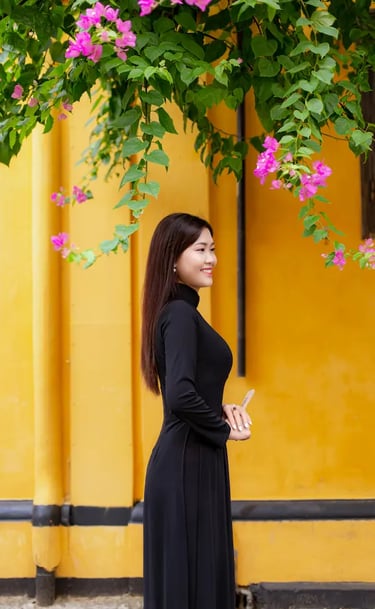
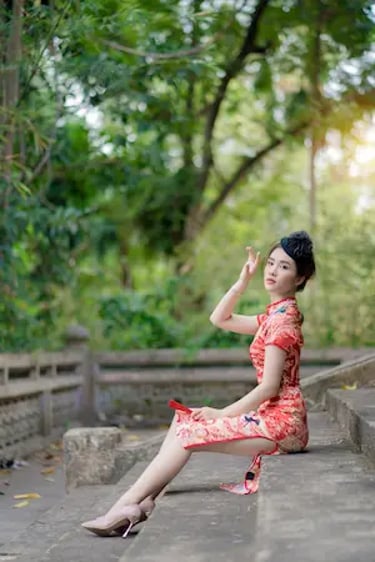
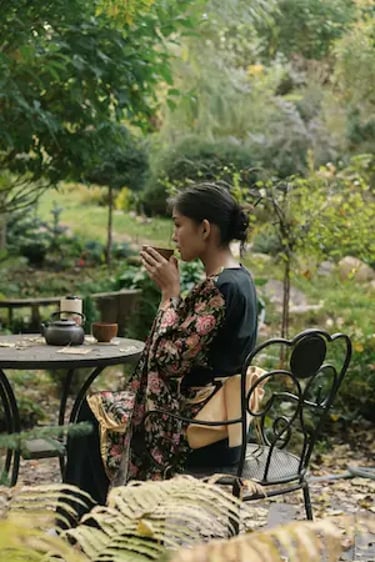
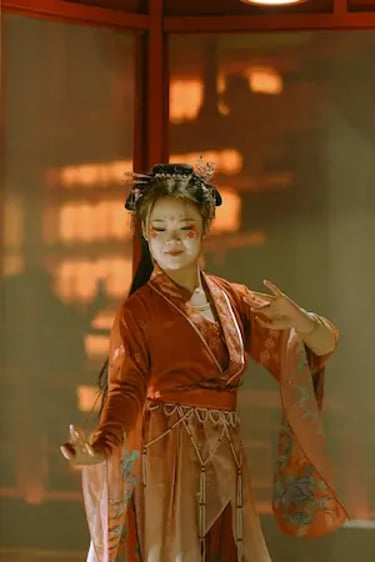
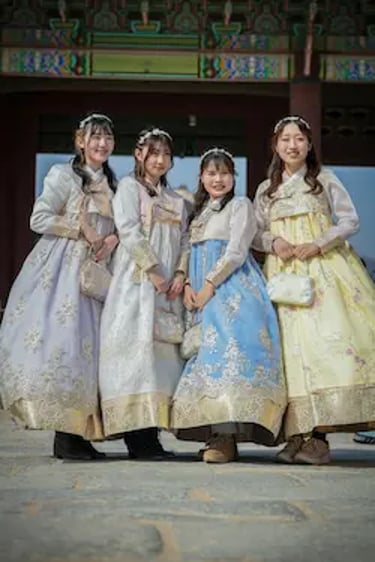
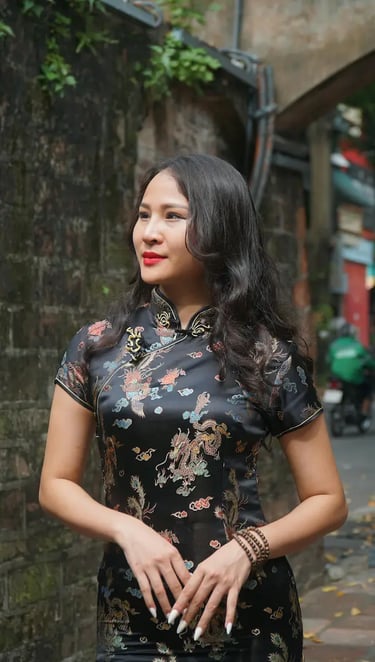
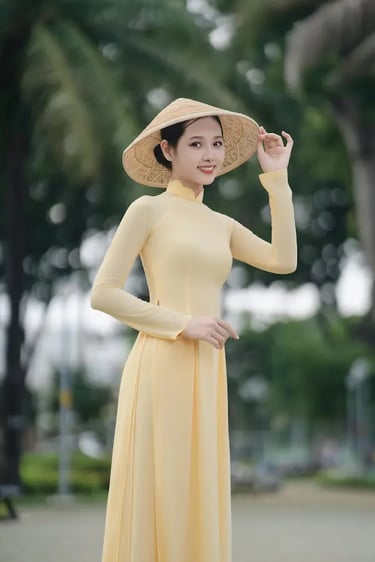
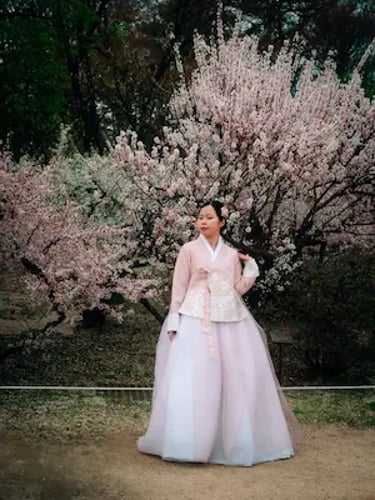








FAQ on Traditional Asian Costumes and Their Integration into the Modern Wardrobe
What are the main traditional costumes in Asia for women?
Traditional women’s costumes in Asia vary by country: the Vietnamese áo dài is a long silk blouse often embroidered with delicate patterns, while the Indian sari comes in cotton, satin, or velvet. Today, these garments integrate easily into the modern wardrobe, worn with heels or sneakers for a more casual style.
Are traditional Asian costumes made of cotton or linen?
Yes, many garments are crafted in cotton or linen, two breathable fabrics. You’ll also find more refined textiles such as silk, as well as modern versions in knit, adapted to contemporary closets.
Are Asian costumes mostly long-sleeved or sleeveless?
It depends on the cuts and the climate: Japanese kimonos are usually long-sleeved, while some Indian tunics exist in sleeveless or short-sleeved versions, ideal for warmer regions.
Are there embroidered or lace versions?
Absolutely — embroidery is a major art in Asia. Many pieces are richly embroidered or adorned with lace, giving them a refined and fancy look. These details make the costumes highly feminine and elegant.
How can a traditional Asian costume be integrated into a modern wardrobe?
You can pair a traditional tunic with skinny jeans, a dark cardigan, a knit sweater, or even a printed T-shirt. This creates a fusion between traditional attire and Western wardrobe essentials like the blouse or the suit.
What are the equivalents for men?
For men, examples include the Chinese changshan or the Japanese samue. Usually made of cotton or linen, they can be worn in a casual way with sneakers, or more elegantly with classic shoes. In a modernized style, some opt for T-shirts or shirts inspired by traditional patterns, in beige or navy blue.
What accessories and shoes go well with these outfits?
Traditionally, women wear heels or pumps, but in a modern style they also choose sneakers. Dark or beige colors pair easily with printed or satin fabrics.
What fabrics are used in traditional Asian costumes?
Fabrics include silk, cotton, crepe, viscose, or even cashmere. Some garments are richly embroidered or woven in jacquard, giving them a chic and refined touch, perfect for all occasions.
How can traditional Asian costumes be adapted to modern women’s fashion?
These outfits can be modernized with a blouse, a polo, or a crew-neck T-shirt. Combined with slim trousers, flowy skirts, or high-waisted styles, they create a hybrid look between tradition and ready-to-wear fashion.
What style details can be found in these clothes?
Traditional costumes often feature stripes, prints, ruffles, or asymmetrical cuts. The neckline and décolleté also vary, from modest shapes to bolder styles depending on the country.
Can these outfits be worn in a casual or sportswear style?
Yes, modern versions are often paired with a tank top, a T-shirt, or even a sportswear top. Worn with sandals or ankle boots, they become comfortable and suitable for everyday life.
What accessories complement a revisited traditional costume?
Scarves, belts, and jewelry add a personal touch. A scarf can modernize a traditional top, while sandals or ankle boots allow you to balance between chic and casual.
Are there models adapted to all body types?
Yes, women’s fashion inspired by Asian costumes offers cuts for all body shapes, including plus size. Flowy, basic pieces in khaki or neutral tones are versatile and always chic and elegant.
Do traditional Asian costumes include dresses or gowns?
Yes, many traditional outfits are actually dresses or gowns with elegant details. For example, the Chinese qipao is a fitted robe with a defined waist, while Indian saris and lehengas resemble maxi gowns or pleated dresses, often worn during ceremonies and weddings.
Are long-sleeve styles common in traditional Asian wear?
Absolutely — the long-sleeve kimono of Japan or the Korean hanbok jacket are iconic examples. However, in warmer regions, you also find short-sleeve or sleeveless tops made of light fabrics like chiffon or rayon.
How can traditional costumes be styled with modern jackets and blazers?
A tunic or robe can easily be combined with denim jackets, blazers, or even an oversized coat. This layering blends couture elegance with boho or streetwear aesthetics, making traditional outfits wearable every day.
Can these costumes be paired with denim, leggings, or shorts?
Yes, modern adaptations often mix traditional pieces with denim jeans, leggings, or even shorts for a youthful twist. For example, a Vietnamese áo dài top can be worn with slim denim for a chic yet comfortable look.
Are floral-print and striped styles found in traditional Asian costumes?
Definitely. Many garments feature floral-prints inspired by nature, while Japanese and Korean designs often use stripes or plaid patterns. From striped jackets to pleated skirts, these motifs add cultural depth while appealing to modern fashion trends.
What necklines and cuts are common in traditional Asian fashion?
Necklines vary widely — from the V-neck qipao to high collars and wrap styles. Cuts may be pleated, oversized, or fitted at the waist, ensuring each wearer finds a design that flatters their silhouette.
Are there accessories like hats, tassels, or lingerie elements?
Yes, accessories are essential. Traditional hats such as the Vietnamese nón lá or Japanese kasa are iconic. Decorative details like tassels are often found in embroidery or belts, while modern designers sometimes borrow lingerie-inspired fabrics like lace or silk to reinterpret traditional outfits.
Can traditional costumes be adapted to boho or couture fashion?
Certainly. Flowing maxi dresses in chiffon or rayon can be styled with boho tassels, while more structured outfits like a midi blazer gown can fit into couture. The adaptability of these costumes makes them relevant for both casual and luxury fashion.
Do coats, sweaters, or vests play a role in traditional or modernized versions?
While not always part of the original garments, layering with sweaters, vests, or long coats is common today. This creates a fusion look that balances tradition with comfort, especially in cooler climates.
Are these costumes suitable for all occasions?
Yes, from daily wear to weddings, there are versions of traditional outfits for all occasions. A floral-print maxi gown may be reserved for ceremonies, while a tee with embroidered details or a blazer can be worn to the office. Their versatility keeps them relevant in modern wardrobes.
Travel
Asia Blog – Practical tips about Vietnam, Thailand, South Korea, Cambodia... visas, eSIMs, banking, travel budget, and more.
© 2025. All rights reserved.
